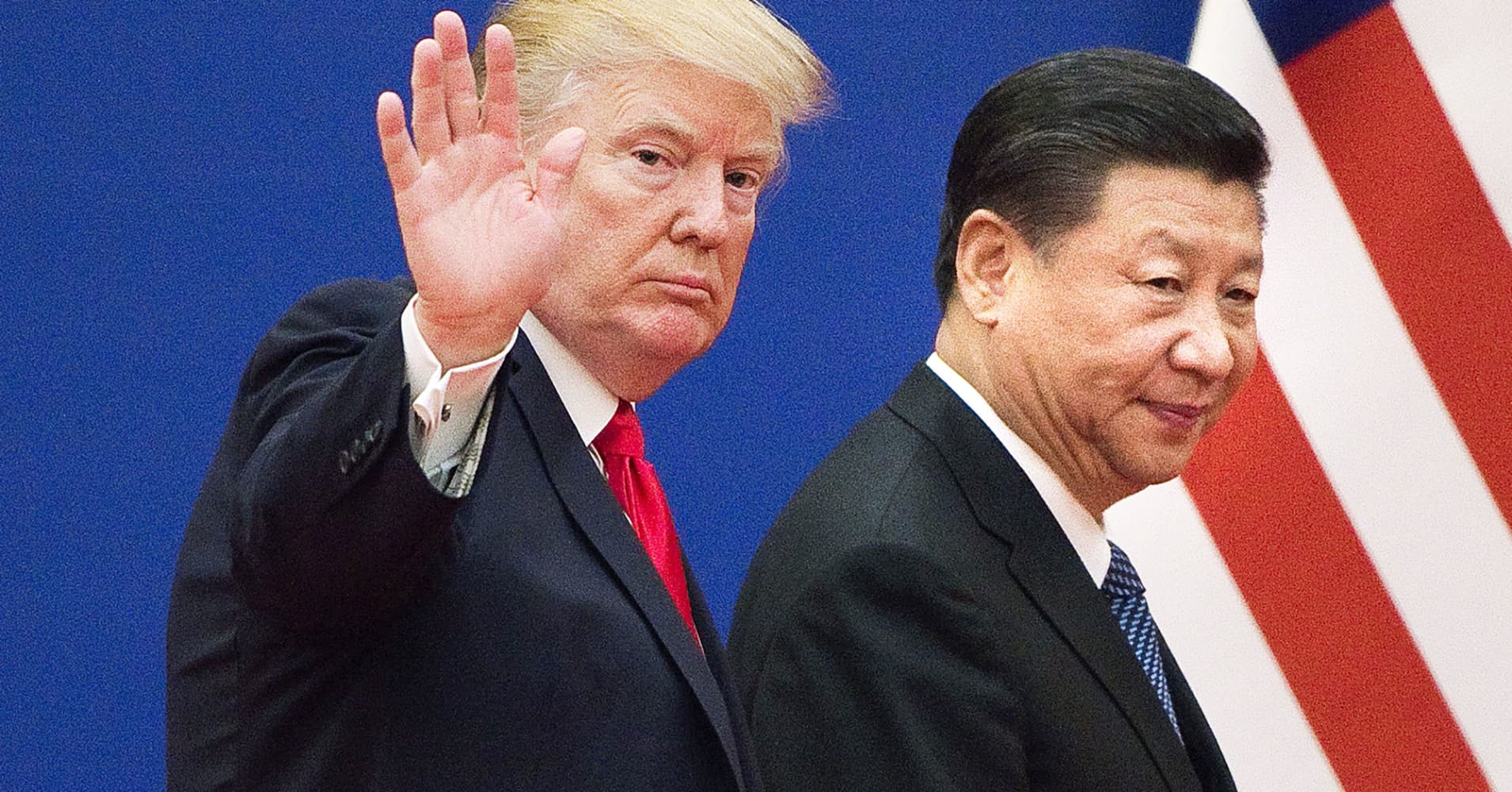
Trade talks between the U.S.and China will dominate the market’s focus in the week ahead, while investors are also watching to see whether other companies join the ranks of Apple and warn about an earnings miss.
Fed Chairman Jerome Powell, who sent stocks sharply higher Friday, speaks again Thursday at an Economics Club of Washington D.C. luncheon. He is expected to deliver the same dovish message about flexibility when it comes to policy and patience when it comes to raising interest rates.
Apple blamed a revenue miss in big part on a sudden drop off in iPhone sales in China in November. The hit was seen as a sign that not only are trade tensions hitting China’s economy, but the U.S. economy and corporations could feel the pinch. Apple’s comments came the day before a stunning drop in ISM manufacturing data which also was blamed in part on trade friction.
“What the market needs next week and the week after is positive guidance from companies. What are companies telling us? What are their customers telling us?” said Quincy Krosby, chief market strategist at Prudential Financial. “If we could move from a stellar earnings to a more moderate earnings backdrop, the market will accept that but if guidance is weak and companies are lowering revenue growth, that will affect the market.”
The S&P 500 surged over 3.3 percent Friday to 2,531, and was up 1.7 percent for the week. The S&P was up more than 7.5 percent from its Dec. 24 low close.
China and the United States will hold vice ministerial level trade talks in Beijing on Monday and Tuesday and are expected to hold another round of meetings the following week.
“China is going to be absolutely the big thing,” said Julian Emanuel, chief equities and derivatives strategist at BTIG. China cut reserve requirements Friday to encourage more bank lending, its latest policy move aimed at ending a slowdown.
Economists expect U.S. growth to slow slightly, to the 2-2.5 percent range in the fist half but markets have been reacting to the prospect of an even slower economy. The ISM data for December was particularly discouraging because of a steep drop in new orders.
“The question is are we likely to have warnings? Given the economic data that we’ve seen, particularly the slowdown in the new orders component, we probably are likely to get warnings and the question is, is it baked into stock prices? We think, for the most part, it is,” said Emanuel.
Markets will also remain heavily focused on data after the weak ISM survey was followed by a surprisingly strong December jobs report with 312,000 nonfarm payrolls added. The employment report showed a strong labor market, with wage growth of 0.4 percent and a pickup in participation by more than 400,000 workers.
“What this market needed was a strong data release, an unequivocally strong data release,” said Krosby. “It was an injection to positive data in a market that has been worried about an economy that is potentially stalling,”
Krosby said the market needs to build on its gains and the positive sentiment around the strong data. “This has been a market that had all of the signatures of the bear claws death by 1,000 cuts. No data release was seen as positive. Everything was seen as negative. If we could turn that psychology around and build on it, but we are waiting to see if there are sellers who were waiting to get out. We need to see if they’re still there.”
Data releases in the comign week include Services ISM Monday and international trade data, out Tuesday morning, but the data the markets are waiting for will be Friday’s CPI inflation report.
During his appearance Friday, Powell indicated that inflation was not a concern for the Fed and the economy is still in good shape despite concerns. He also said the Fed was paying attention to the market, which is reflecting a weaker outlook than the data suggests.
Powell also indicated the Fed can be “patient” and it will be flexible and willing to change policy if it sees changes in conditions. That comforted markets and sent stocks higher. Powell had said the Fed’s balance sheet reduction program was on ‘auto pilot’ when he spoke in December, and that spooked some investors who wanted to see the Fed willing to modify its policy in the face of the market’s sell off.
“Certainly, the market feels better about the fact that the Fed is moving towards its view on the hiking cycle. which is that it’s largely over. From that perspective it decreases the possibility that the Fed is going to hike too far like it did in 2004 and 2006. It did in 2000 and it did in 1974, triggering broader stock market downturns and recessions,” said Emanuel.
“That’s makes people feel better and from our point of view that it makes it more likely that the technical bear market we’ve seen…is the likelihood that this going to be a shorter, shallower non-recessionary bear market,” said Emanuel. The S&P 500 has briefly visited a bear market, falling 20 percent from its all-time high on an intraday basis.
Emanuel said the rally on the Fed was important since it had been a concern for the market.He expects the Fed to stay on hold this year and also announce that it will stop the roll off of its balance sheet by mid year.
“This reinforces the view the bulk of this bear market decline is behind us, and there’s at least an expectation that communication between the U.S. and China is poised to improve rather than become more acrimonious over the course of the next few weeks,” he said.
Be the first to comment